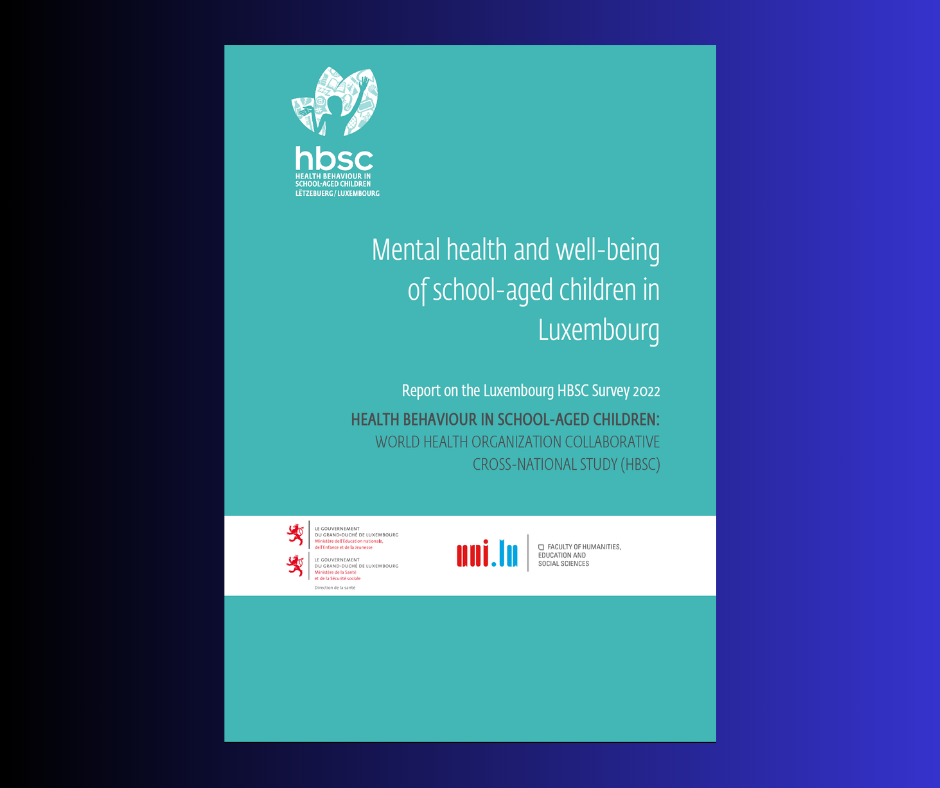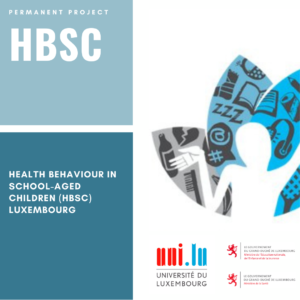The Health Behaviour in School-aged Children (HBSC) Luxembourg Mental health report has been published. Focusing on adolescents’ mental health and well-being, this report is the first of a series of thematic publications that will follow in the next months, based on the 2022 survey.
HBSC is an international survey collaboration under the aegis of the World Health Organization – Regional Office for Europe, counting with more than 50 countries and regions from Europe, North America and Asia. In Luxembourg, the HBSC study is undertaken in collaboration with the Ministry of Health and Social Security/Health Directorate, the Ministry of Education, Children and Youth and the Centre for Childhood and Youth Research (CCY), of the University of Luxembourg.
The survey is conducted every 4 years with pupils aged 11 to 18. In 2022, a representative sample of 9,432 pupils from 688 classes and 152 schools took part in the HBSC Luxembourg survey. This first report documents the mental health and well-being findings.
Main findings
- In general, mental health and well-being of adolescents in Luxembourg decreased. In 2022, 28.7% of adolescents reported a high life satisfaction compared to the 31.5% in 2018.
- Girls worse off than boys: 62.3% of girls reported multiple health complaints, compared to 35.4% of boys.
- With an increase in age, there was a decrease in adolescents’ mental health and well-being. The prevalence of adolescents at risk of depression was 8.1% for boys and 14.6% for girls aged 11-12, and 18.7% for boys and 34.1% for girls aged 17-18.
- A different age pattern appeared depending on gender. For instance, 14.0% of girls felt lonely at the age of 11-12 years old; a steep increase follows and 26.6% of 13-14 years reported feeling lonely, with no significant age differences afterwards. As for boys, a steep increase of feeling lonely happens between 13-14 years old (9.1%) and 15-16 years old (15.4%), but no significant difference is found between the age groups of 11-12 and 13-14 years old, on the one side, and 15-16 and 17-18 years old on the other side.
- This gender differences were linked with other psychosocial and social support factors. For instance, boys reported higher family support than girls.
These findings are not surprising. A similar gender and age pattern was already found in previous HBSC Luxembourg surveys, as well as in many other countries. However, they raise awareness, as the difference between boys and girls are the widest since 2006.
The HBSC Luxembourg Mental health and well-being report can currently be downloaded from the website www.hbsc.lu, in which interactive data visualization between 2006 and 2022 are also available. The following reports will also be available for download at the same website. They will focus on: Health behaviours, such as physical activity and eating habits; Risk behaviours, such as substance consumption and physical fighting; Social context, including social support and school environment and; Trends over time and Covid-19 impact on adolescents’ health and well-being.
Access the HBSC report on mental health
- Read in English: Mental health and well-being of school-aged children in Luxembourg
- Auf Deutsch lesen: Mentale Gesundheit und Wohlbefinden von Kindern und Jugendlichen im Schulalter in Luxemburg
- Lire en français: Santé mentale et bien-être des enfants et adolescents en âge scolaire au Luxembourg




